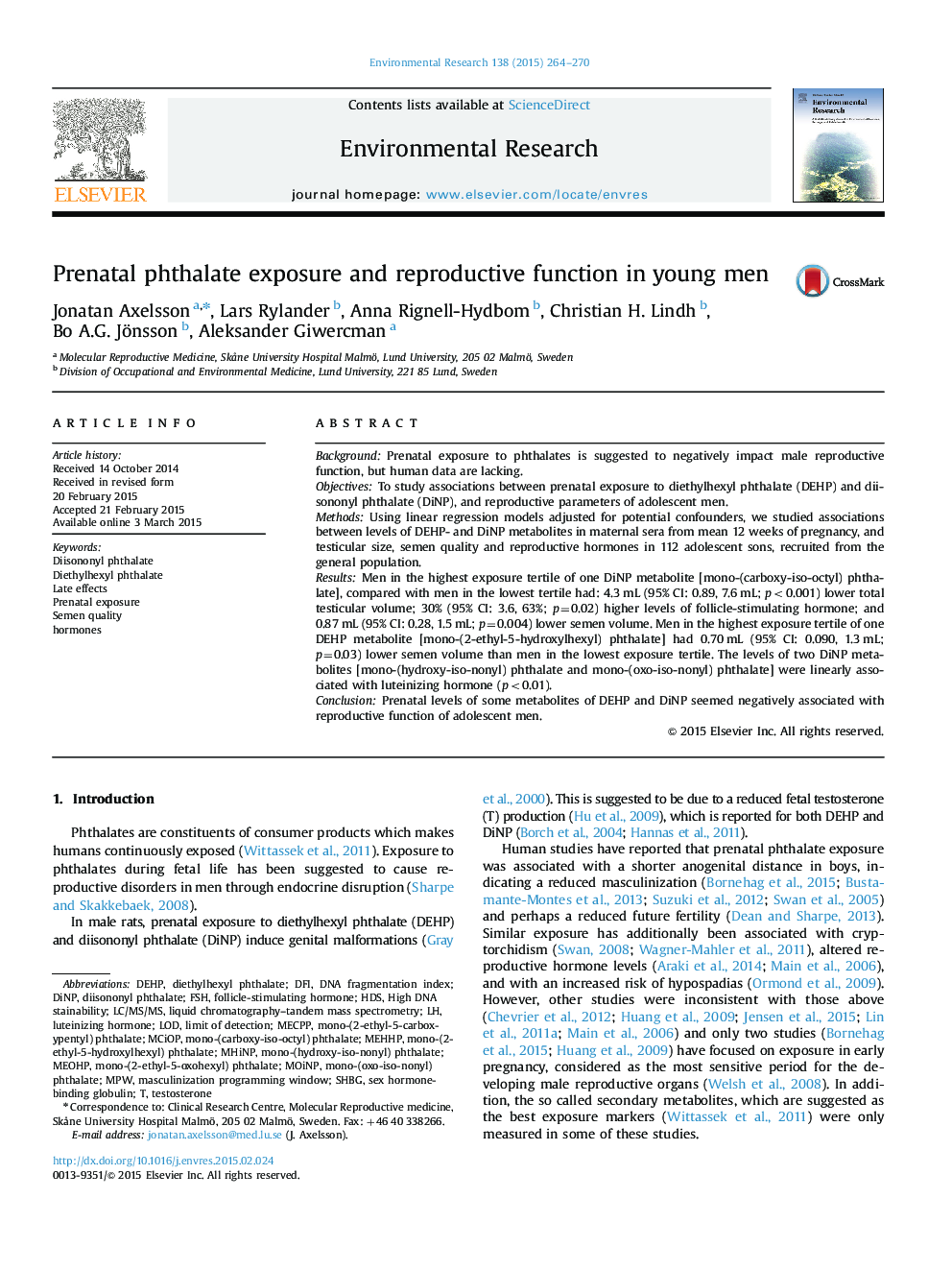| Article ID | Journal | Published Year | Pages | File Type |
|---|---|---|---|---|
| 4469771 | Environmental Research | 2015 | 7 Pages |
•We studied associations between prenatal phthalate exposure and reproductive outcomes.•DEHP and DiNP exposure seemed associated with a lower semen volume.•Men with the highest levels of one DiNP metabolite had a lower testicular volume.•DiNP metabolite levels were associated with altered levels of hormones.
BackgroundPrenatal exposure to phthalates is suggested to negatively impact male reproductive function, but human data are lacking.ObjectivesTo study associations between prenatal exposure to diethylhexyl phthalate (DEHP) and diisononyl phthalate (DiNP), and reproductive parameters of adolescent men.MethodsUsing linear regression models adjusted for potential confounders, we studied associations between levels of DEHP- and DiNP metabolites in maternal sera from mean 12 weeks of pregnancy, and testicular size, semen quality and reproductive hormones in 112 adolescent sons, recruited from the general population.ResultsMen in the highest exposure tertile of one DiNP metabolite [mono-(carboxy-iso-octyl) phthalate], compared with men in the lowest tertile had: 4.3 mL (95% CI: 0.89, 7.6 mL; p<0.001) lower total testicular volume; 30% (95% CI: 3.6, 63%; p=0.02) higher levels of follicle-stimulating hormone; and 0.87 mL (95% CI: 0.28, 1.5 mL; p=0.004) lower semen volume. Men in the highest exposure tertile of one DEHP metabolite [mono-(2-ethyl-5-hydroxylhexyl) phthalate] had 0.70 mL (95% CI: 0.090, 1.3 mL; p=0.03) lower semen volume than men in the lowest exposure tertile. The levels of two DiNP metabolites [mono-(hydroxy-iso-nonyl) phthalate and mono-(oxo-iso-nonyl) phthalate] were linearly associated with luteinizing hormone (p<0.01).ConclusionPrenatal levels of some metabolites of DEHP and DiNP seemed negatively associated with reproductive function of adolescent men.
